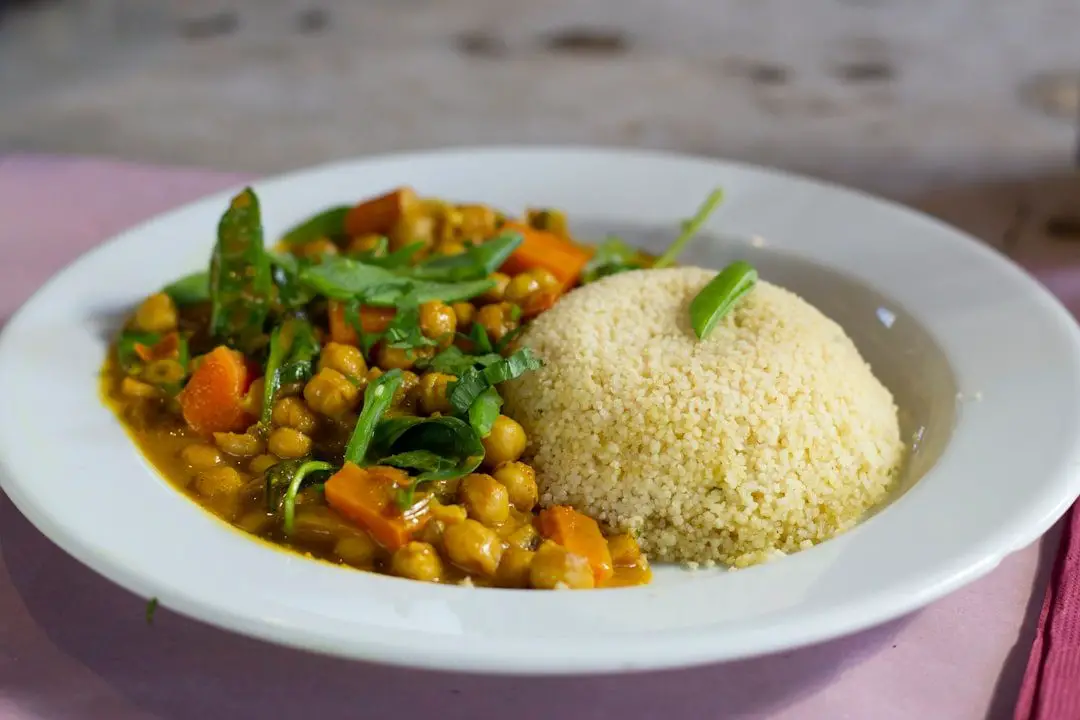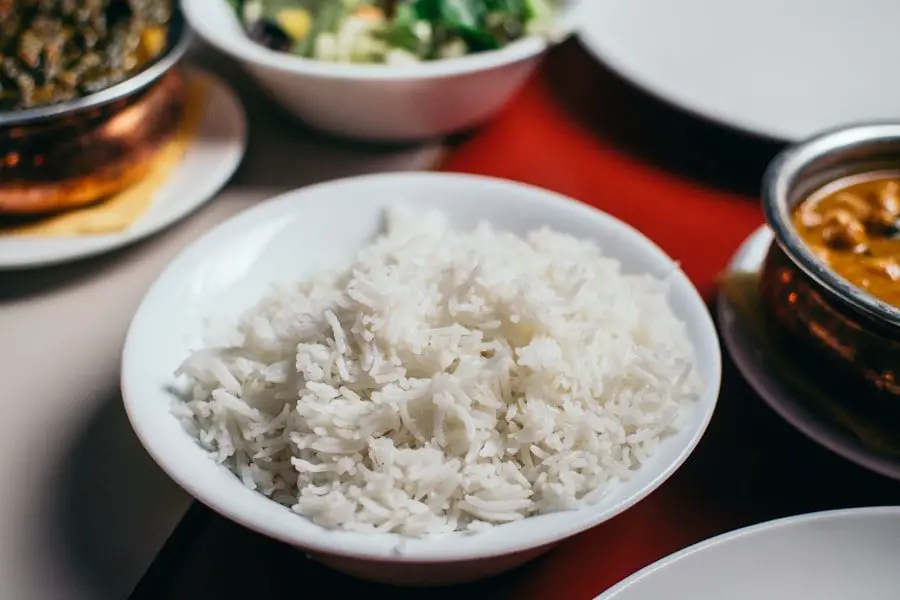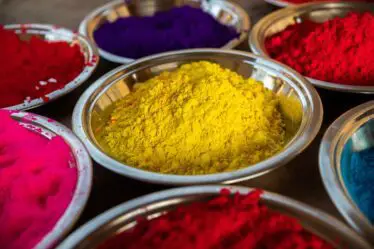
Curry powders have a rich history that dates back centuries. Originating in India, curry powders were created as a way to preserve and enhance the flavors of various spices and herbs. Over time, curry powders spread to different parts of the world and became an integral part of many cuisines.
Curry powder is a blend of spices and herbs that is used to add flavor and depth to dishes. It typically consists of a combination of coriander, cumin, turmeric, fenugreek, and other spices. The exact composition of curry powder can vary depending on the region and the cook’s preferences.
Curry powder is incredibly versatile and can be used in a wide range of dishes. It is commonly used in Indian, Thai, and Middle Eastern cuisines, but it can also be found in dishes from other parts of the world. It adds a unique flavor and aroma to curries, stews, soups, marinades, and even baked goods.
There are many different types of curry powders available on the market. Each type has its own unique flavor profile and heat level. Some curry powders are mild and aromatic, while others are spicy and bold. It’s important to choose the right type of curry powder for your dish to achieve the desired flavor.
Key Takeaways
- Curry powders are a blend of spices commonly used in Indian, Thai, and Middle Eastern cuisine.
- When choosing a curry powder, consider the level of spiciness, quality of ingredients, and intended cuisine.
- Quality ingredients, such as fresh spices and herbs, can greatly enhance the flavor of curry powders.
- Mild and spicy curry powders offer different levels of heat and flavor, so choose based on personal preference and recipe requirements.
- Top curry powders for Indian, Thai, and Middle Eastern cuisine include Madras, Thai green curry, and Ras el Hanout.
Tips for Choosing the Best Curry Powder
When it comes to choosing the best curry powder for your cooking, there are several factors to consider. Here are some tips to help you make the right choice:
1. Consider the cuisine you will be cooking: Different cuisines have different flavor profiles, so it’s important to choose a curry powder that complements the dish you are making. For example, if you are making an Indian curry, you may want to choose a curry powder with a strong aroma and bold flavors. On the other hand, if you are making a Thai curry, you may prefer a milder curry powder with a hint of sweetness.
2. Look for high-quality ingredients: The quality of the ingredients used in curry powder can greatly affect its flavor. Look for curry powders that are made with fresh, high-quality spices and herbs. Avoid curry powders that contain artificial additives or preservatives.
3. Check the spice level and flavor profile: Curry powders can vary in terms of their heat level and flavor profile. Some curry powders are mild and aromatic, while others are spicy and bold. Consider your personal preference and the preferences of your guests when choosing a curry powder.
4. Read reviews and ask for recommendations: Before purchasing a curry powder, take the time to read reviews from other customers. This can give you valuable insights into the quality and flavor of the product. You can also ask for recommendations from friends, family, or fellow food enthusiasts.
The Importance of Quality Ingredients in Curry Powders
The quality of the ingredients used in curry powders plays a crucial role in determining their flavor and aroma. Fresh, high-quality spices and herbs will have a more vibrant and intense flavor compared to stale or low-quality ingredients.
Common ingredients found in curry powders include coriander, cumin, turmeric, fenugreek, mustard seeds, cardamom, cinnamon, cloves, and black pepper. Each ingredient contributes to the overall flavor profile of the curry powder.
Coriander seeds add a citrusy and slightly sweet flavor to curry powders. Cumin seeds provide a warm and earthy taste. Turmeric gives curry powders their vibrant yellow color and adds a slightly bitter and peppery flavor. Fenugreek seeds have a slightly bitter taste with hints of maple syrup.
Mustard seeds add a pungent and tangy flavor to curry powders. Cardamom pods have a sweet and floral aroma with hints of citrus. Cinnamon adds warmth and sweetness, while cloves provide a strong and aromatic flavor. Black pepper adds a spicy kick to curry powders.
Using fresh spices and herbs is essential for achieving the best flavor in curry powders. Over time, spices and herbs can lose their potency and become stale. It’s best to purchase whole spices and grind them yourself as needed. This ensures that you are using the freshest ingredients and allows you to adjust the flavor to your liking.
Mild vs. Spicy Curry Powders: Which is Right for You?
| Curry Powder Type | Spice Level | Flavor Profile | Common Ingredients |
|---|---|---|---|
| Mild Curry Powder | Low | Mild, Sweet, Earthy | Turmeric, Cumin, Coriander, Fenugreek, Ginger, Cinnamon |
| Spicy Curry Powder | High | Hot, Bold, Pungent | Red Chili Pepper, Cumin, Coriander, Turmeric, Ginger, Garlic |
| Uses | Mild curry powder is great for adding flavor to dishes without overwhelming the palate. It’s perfect for those who prefer a milder taste or are sensitive to spicy foods. Spicy curry powder is ideal for those who love bold and hot flavors and want to add some heat to their dishes. | ||
Curry powders can vary in terms of their heat level, ranging from mild to spicy. The level of spiciness in a curry powder is determined by the types and amounts of chili peppers used.
Mild curry powders are perfect for those who prefer a more subtle heat. They add flavor and depth to dishes without overwhelming the palate. Mild curry powders are often used in dishes that are meant to be enjoyed by a wide range of people, including children or those who are sensitive to spicy foods.
Spicy curry powders, on the other hand, are for those who enjoy a fiery kick in their dishes. They add a bold and intense flavor to curries, stews, and other dishes. Spicy curry powders are often used in dishes that are meant to be enjoyed by those who can handle the heat.
If you’re unsure about which type of curry powder to choose, you can always start with a mild curry powder and adjust the spice level to your preference. You can add additional chili peppers or other spices to increase the heat, or you can use less curry powder if you prefer a milder flavor.
The Top 5 Curry Powders for Indian Cuisine
Indian cuisine is known for its rich and flavorful curries. Here are five popular curry powders that are commonly used in Indian cooking:
1. Madras Curry Powder: Madras curry powder is a blend of spices that originated in the southern region of India. It is known for its bold and spicy flavor. Madras curry powder typically contains coriander, cumin, turmeric, fenugreek, mustard seeds, and chili peppers. It is perfect for making spicy curries and other Indian dishes.
2. Kashmiri Curry Powder: Kashmiri curry powder is a milder curry powder that is commonly used in Kashmiri cuisine. It has a vibrant red color and a slightly sweet and smoky flavor. Kashmiri curry powder typically contains Kashmiri chili peppers, which are known for their mild heat and rich flavor. It is perfect for making dishes like Rogan Josh or Kashmiri Pulao.
3. Garam Masala: Garam masala is not technically a curry powder, but it is commonly used in Indian cuisine to add flavor and depth to curries and other dishes. Garam masala is a blend of spices that typically includes coriander, cumin, cardamom, cinnamon, cloves, and black pepper. It has a warm and aromatic flavor that pairs well with a wide range of ingredients.
4. Vindaloo Curry Powder: Vindaloo curry powder is known for its fiery heat and bold flavor. It originated in the Goa region of India and is commonly used in Goan cuisine. Vindaloo curry powder typically contains coriander, cumin, turmeric, mustard seeds, fenugreek, black pepper, and chili peppers. It is perfect for making spicy vindaloo curries or marinades.
5. Tikka Masala Curry Powder: Tikka masala curry powder is a popular choice for making creamy and flavorful curries. It has a mild heat level and a rich and creamy flavor. Tikka masala curry powder typically contains coriander, cumin, turmeric, paprika, cinnamon, cloves, and cardamom. It is perfect for making dishes like Chicken Tikka Masala or Paneer Tikka Masala.
The Top 5 Curry Powders for Thai Cuisine

Thai cuisine is known for its bold and aromatic flavors. Here are five popular curry powders that are commonly used in Thai cooking:
1. Red Curry Powder: Red curry powder is a staple in Thai cuisine. It is known for its vibrant red color and spicy flavor. Red curry powder typically contains red chili peppers, coriander, cumin, lemongrass, galangal, garlic, and shrimp paste. It is perfect for making spicy red curries or stir-fries.
2. Green Curry Powder: Green curry powder is another popular choice in Thai cuisine. It has a vibrant green color and a slightly milder heat compared to red curry powder. Green curry powder typically contains green chili peppers, coriander, cumin, lemongrass, galangal, garlic, and shrimp paste. It is perfect for making green curries or soups.
3. Yellow Curry Powder: Yellow curry powder is milder and sweeter compared to red and green curry powders. It has a bright yellow color and a subtle heat. Yellow curry powder typically contains turmeric, coriander, cumin, fenugreek, ginger, garlic, and cinnamon. It is perfect for making yellow curries or rice dishes.
4. Massaman Curry Powder: Massaman curry powder is known for its rich and complex flavors. It has a mild heat level and a slightly sweet and nutty flavor. Massaman curry powder typically contains coriander, cumin, cardamom, cinnamon, cloves, star anise, nutmeg, and dried chili peppers. It is perfect for making Massaman curries or stews.
5. Panang Curry Powder: Panang curry powder is similar to red curry powder but has a richer and creamier flavor. It has a medium heat level and a slightly sweet and nutty taste. Panang curry powder typically contains red chili peppers, coriander, cumin, lemongrass, galangal, garlic, and shrimp paste. It is perfect for making Panang curries or stir-fries.
The Top 5 Curry Powders for Middle Eastern Cuisine
Middle Eastern cuisine is known for its aromatic spices and bold flavors. Here are five popular curry powders that are commonly used in Middle Eastern cooking:
1. Baharat Curry Powder: Baharat curry powder is a versatile spice blend that is commonly used in Middle Eastern cuisine. It has a warm and aromatic flavor with hints of cinnamon, cloves, cardamom, and black pepper. Baharat curry powder is perfect for making dishes like kebabs, stews, or rice pilaf.
2. Ras el Hanout Curry Powder: Ras el Hanout curry powder is a complex spice blend that is commonly used in Moroccan cuisine. It has a rich and aromatic flavor with hints of cinnamon, cloves, cardamom, cumin, coriander, ginger, and turmeric. Ras el Hanout curry powder is perfect for making tagines or couscous dishes.
3. Za’atar Curry Powder: Za’atar curry powder is a unique spice blend that is commonly used in Middle Eastern cuisine. It has a tangy and herbal flavor with hints of thyme, oregano, sumac, sesame seeds, and salt. Za’atar curry powder is perfect for sprinkling on flatbreads or roasted vegetables.
4. Advieh Curry Powder: Advieh curry powder is a Persian spice blend that is commonly used in Iranian cuisine. It has a warm and aromatic flavor with hints of cinnamon, cardamom, cumin, coriander, rose petals, and dried lime. Advieh curry powder is perfect for making dishes like rice pilaf or stews.
5. Dukkah Curry Powder: Dukkah curry powder is an Egyptian spice blend that is commonly used as a dip or topping. It has a nutty and aromatic flavor with hints of toasted sesame seeds, hazelnuts, coriander, cumin, and black pepper. Dukkah curry powder is perfect for sprinkling on salads or roasted vegetables.
How to Store Curry Powders for Optimal Freshness and Flavor
To maintain the freshness and flavor of curry powders, it’s important to store them properly. Here are some tips for storing curry powders:
1. Store in a cool and dark place: Curry powders should be stored in a cool and dark place, away from direct sunlight and heat sources. Exposure to light and heat can cause the spices to lose their flavor and aroma.
2. Use airtight containers: Transfer the curry powders to airtight containers to prevent moisture and air from getting in. This will help to preserve the freshness and flavor of the spices.
3. Avoid storing near strong-smelling ingredients: Curry powders can absorb odors from other strong-smelling ingredients, so it’s best to store them away from spices with strong aromas.
4. Keep away from moisture: Moisture can cause the spices to clump together and lose their flavor. Make sure the containers are completely dry before storing the curry powders.
5. Label and date the containers: To keep track of the freshness of your curry powders, label and date the containers when you first open them. This will help you know when it’s time to replace them.
The shelf life of curry powders can vary depending on the quality of the ingredients used and how they are stored. Generally, curry powders can last for up to one year if stored properly. However, it’s best to use them within six months for optimal flavor.
Creative Ways to Use Curry Powders in Your Cooking
Curry powders are incredibly versatile and can be used in a variety of dishes. Here are some creative ways to use curry powders in your cooking:
1. Marinades: Use curry powders as a base for marinades for meats, seafood, or vegetables. The spices and herbs in the curry powder will infuse the ingredients with flavor and aroma.
2. Salad dressings: Add a pinch of curry powder to your favorite salad dressing for an extra kick of flavor. It pairs well with citrus-based dressings or creamy dressings.
3. Roasted vegetables: Toss your favorite vegetables with a sprinkle of curry powder before roasting them. The spices will add depth and complexity to the flavors of the vegetables.
4. Soups and stews: Add a spoonful of curry powder to your favorite soups or stews for a burst of flavor. It works well in both meat-based and vegetarian dishes.
5. Baked goods: Experiment with adding a small amount of curry powder to baked goods like bread, muffins, or cookies. It can add an unexpected twist to traditional recipes.
6. Rice dishes: Mix curry powder into cooked rice for a flavorful side dish. It pairs well with both Indian and Thai-inspired rice dishes.
7. Popcorn seasoning: Sprinkle curry powder on freshly popped popcorn for a unique and flavorful snack.
8. Dips and spreads: Dips and spreads are versatile and delicious additions to any meal or snack. Whether you’re hosting a party or simply looking for a quick and easy appetizer, dips and spreads are sure to please. From classic favorites like guacamole and hummus to more unique options like spinach and artichoke dip or buffalo chicken dip, there is a dip or spread to suit every taste. These creamy and flavorful concoctions can be paired with a variety of dippers, such as tortilla chips, crackers, or fresh vegetables, making them a crowd-pleasing option for any occasion. Additionally, dips and spreads can be made ahead of time, allowing for stress-free entertaining. So next time you’re in need of a tasty and convenient dish, consider whipping up a batch of your favorite dip or spread.
If you’re a fan of flavorful spices, you won’t want to miss out on the article “The Best Curry Powders: A Guide to Spicing Up Your Dishes” on Flavorful Sips. This informative piece dives into the world of curry powders, exploring different types and their unique flavor profiles. Whether you’re a curry connoisseur or just starting to experiment with this versatile spice blend, this article will provide you with valuable insights and recommendations. Check it out here!



